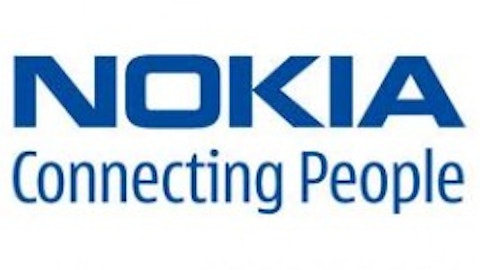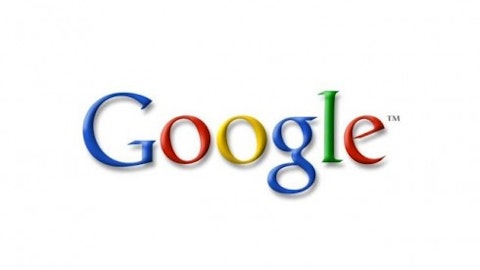Amazon.com, Inc. (NASDAQ:AMZN) currently trades at a whopping 3500 times trailing earnings. Analyst expectations are for $1.47 in EPS for the current fiscal year, and the current stock price is still 181 times that figure, compared to its peer average of 22. Amazon has a free cash flow margin of less than 1 percent, and the enterprise value implied by the current stock price is 45 times trailing EBITDA, much higher than the rest of the industry.
Even with a two-point concession in the discount rate to other established companies in the services industry, Amazon looks meaningfully overvalued today. I believe Amazon’s earnings are simply not growing fast enough to justify its lofty valuation.
The numbers above certainly don’t justify buying Amazon.com, Inc. (NASDAQ:AMZN). The company has incessantly posted year-over-year declines in the quarterly earnings. Amazon currently has an operating margin of less than 4%; whereas with more than 7-times Amazon’s revenue, Wal-Mart Stores, Inc. (NYSE:WMT)’s operating margin of 8% is double than that. By operating on such a thin margin, future costs of upgrading its infrastructure, expanding into new areas and increased competition could erode billions more from its operating profit.
With the ability to offer shoppers the chance to see and touch a product before purchasing it, retailers like Wal-Mart always had/have an advantage over the websites in the e-commerce sales industry. Amazon and other e-retailers did try to offset that by offering same-day delivery for some products. But Wal-Mart fought back with its own same-day delivery service by using its wide network of superstores as distribution centers.
Moreover, in the effort to offer the lowest prices, Amazon ends up making less profit on each of the products it sells. Consequently, this translates into a non-linear and lower gross margin for Amazon than Wal-Mart.
AMZN Gross Profit Margin Quarterly data by YCharts
But what surprises me the most is how Amazon’s share price have continued to rise and reach new highs, even when the company’s core business model, which accounts for more than 95% of Amazon’s total revenue, has nothing but contracted. With core e-business guidance of about 17% revenue growth for the first-quarter of fiscal year 2013, which will be the sixth successive quarter of reduced year-on-year growth, Amazon can no longer be considered a growth company.
AMZN Operating Margin TTM data by YCharts
Moreover, the biggest competitive advantage that Amazon enjoyed for years is coming to an end — its ability to sell products without charging state sales tax to shoppers. Texas and California have already passed legislation that will ensure Amazon starts collecting the sales tax before long. That, along with the ever increasing costs of maintaining massive warehouses loaded with inventory, would surely put further dents in Amazon’s earnings in the future. As the chart above shows, the stock is certainly, albeit perhaps slowly, working its way to becoming a bubble.
Amazon also ensures that its products reach customers in the shortest amount of time possible. This is one of the reasons it has enjoyed excellent customer satisfaction over the years. But I believe, as postage and shipping rates increase, the company will come under further pressure from this rising operating cost. Moreover, Amazon’s foray into hardware has been nothing but a part-time hobby.
The company itself has confirmed that it makes no profit on Kindle sales. Moreover, Apple Inc. (NASDAQ:AAPL) has answered the Kindle with its own iPad Mini, which will cannibalize the Kindle’s sales going forward, further accelerating Amazon’s year-over-year operating margin decline deep into the red. Moreover, Wal-Mart no longer sells Amazon’s Kindle eReaders and tablets, confirming that consumers are more interested in Apple’s iPad and other gadgets. If more retailers decide to stop selling Kindles, Amazon will surely lose a valuable mean of physically displaying its products, something that can’t be achieved through the website.
Moreover, Kindle is not really built for productive tasks — it’s a great device for reading books but it can’t replace the functionality of a smartphone. Though Kindles allow consumers to consume media, you can’t create anything from it! Even Kindle Fire, which runs a different version of the Android operating system, hasn’t impressed me much — albeit with the exception of an impressive resolution. Moreover, the iPad Mini also wins when it comes to apps. Not only does it offer more apps, but more useful and high-quality ones. Many of the current Kindle’s best apps are ported from iOS — so, I don’t expect to see many rich-quality exclusive Kindles apps.
Foolish Bottom-line
Based on the facts presented in this article, it’s unambiguous now that Amazon has entered a phase of declining growth. On the other hand, Amazon’s stock continues to trade at P/E ratios of absurdly high levels, where it far exceeds even the best earnings growth forecasts. The company faces severe competition in its core market and is therefore desperately looking for new sources of growth outside of its core e-business strengths.
Even after reporting disappointing year-over-year growth in the last few quarters, Amazon shares are still up more than 35 percent, whereas Apple recently reported an excellent quarter, yet is down more than 10%. Apple’s shares currently trade at 10 times trailing earnings and 6.8 times trailing EBITDA — the lowest since the financial crisis of 2008 — whereas Amazon trades at over 180 times its forward earnings.
Consequently, I believe Amazon is overvalued by many metrics, and after the premium provided by the recent rise in the shares it’s certainly approaching the optimal risk/reward zone. Remember, being a short candidate doesn’t mean I am recommending you short Amazon today. I would wait for the shares to rise to the mid-to-high $285-$300 level, as the shares present an attractive risk/reward there. Over-$285 is where I will start a short position.
The article The Amazon Bubble Could Burst Soon originally appeared on Fool.com and is written by Nauman Aly.
Copyright © 1995 – 2013 The Motley Fool, LLC. All rights reserved. The Motley Fool has a disclosure policy.







